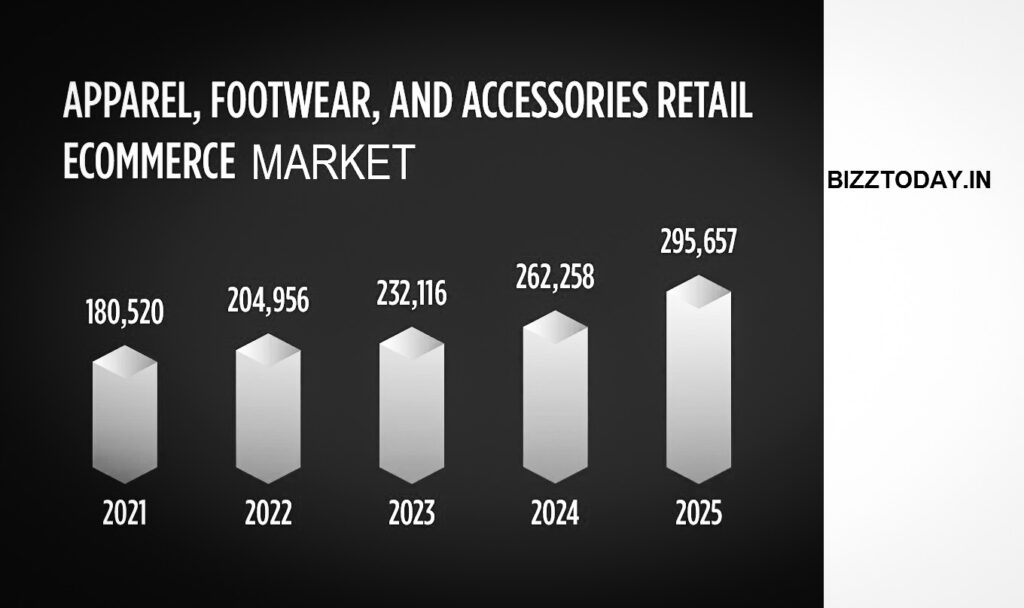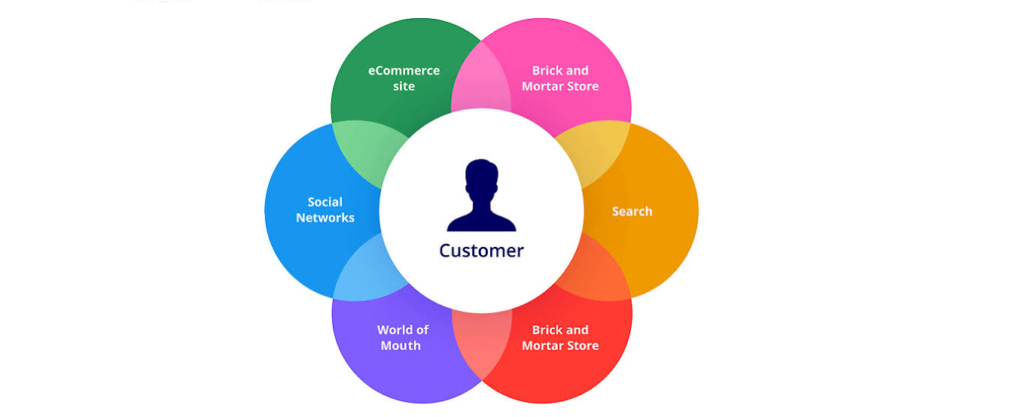In 2023 , the United States witnessed a surge in retail e-commerce revenues, specifically in the apparel and accessories sector, reaching an impressive $180.5 billion. Looking ahead to 2025, Statista forecasts substantial growth, projecting this figure to soar to $295.7 billion. (CLOTHING BUSINESS ONLINE)
This remarkable Clothing Business Online expansion can be attributed to various growth catalysts, including the widespread adoption of digital channels, enhanced online accessibility facilitated by mobile devices, and continuous technological innovations. The dynamic landscape of the online fashion industry is a testament to these driving forces, creating abundant opportunities for entrepreneurs with a keen sense of fashion to actively participate and capitalize on this burgeoning market.

ONLINE VS OFFLINE
While mortar stores continue to hold a significant presence in the retail industry, their dominance has been gradually diminishing. Currently, online apparel sales constitute a substantial 48% of the total U.S. apparel sales.
Examining the advantages of online selling over traditional offline methods reveals several key benefits:
1. Lower Obstacle to Entry: Establishing an online storefront is a relatively swift process, taking only a few days or weeks. In contrast, venturing into a traditional brick-and-mortar setting demands a more extended timeline and involves a significantly higher initial investment.
2. Lower running costs: The cost of opening a physical store typically ranges from $55,000 to $170,000, while online clothing business models generally require a considerably lower investment.
3. Convenience for Shoppers: Online platforms offer customers the flexibility to shop at any time, providing a level of convenience that surpasses the need to travel to physical stores.
4. Multi-channel Marketing: The integration of Multi-channel commerce seamlessly connects various sales channels, both in-store and online, creating a cohesive customer experience. Studies indicate that such integration could lead to a remarkable 33% increase in revenue.

Start an Online Clothing Business
The optimal moment to enter the online clothing market was approximately 10 years ago, during its initial surge. However, the second-best time is unquestionably the present.
Given the considerable potential for growth, venturing into the realm of ecommerce today offers an opportunity to capitalize on current trends rather than missing out on a lucrative prospect.
Prior to showcasing your clothing for sale, it’s essential to establish a solid foundation that will guide you in the right direction from the outset. These seven steps serve as a strategic roadmap to prepare you effectively for success in the ecommerce landscape.
Commence by selecting a specific clothing niche.
Select a clothing niche.
aiming to sell clothing that caters to a broad demographic, focus on a more specific niche aligned with your personal interests and business objectives.
Consider these key factors when exploring your options:
- Uniqueness is Key: In a saturated ecommerce market, standing out is crucial. If your clothing brand mirrors countless others, you risk blending into the background.
- Passion-Driven Niche: Choose a niche that aligns with your passions. Reflect on the clothing you gravitate towards, envision products you’d like to see in the market, and think about items you’d enthusiastically recommend to friends and family.
- Add Value and Establish Authority: Assess whether you can contribute value and position yourself as an authority in the chosen niche. Identify gaps in the market where your expertise, such as sustainability or social work, can make a meaningful impact. For instance, consider launching a fair trade or nonprofit clothing line.
- Evaluate Earning Potential: Ensure that your chosen niche holds earning potential. Identify opportunities or unique value propositions that facilitate rapid growth and revenue generation. By strategically positioning yourself, you can find a space in the market where you make a difference and earn income.
Decider business plan
Crafting a comprehensive plan is imperative when launching a business, regardless of its scale. A robust business plan transcends the simplistic goal of “sell items, make money” and delves into the intricacies of your business operations, encompassing:
- Executive Summary: A succinct overview outlining your company’s overarching goals and objectives.
- Company Description: In-depth insights into your business, encompassing product lines, target customer demographics, and strategies for maintaining competitiveness.
- Market Analysis: A thorough examination of marketplace data and statistics, encompassing average sales, the competition landscape, and projected growth rates.
- Competitive Analysis: A focused evaluation of competitors operating in the same domain.
- Marketing Plan: Comprehensive details outlining online and offline sales and marketing strategies.
- Financial Projections: Financial forecasts for both the short-term and long-term future.
Another pivotal aspect of formulating your online retail business plan involves selecting a suitable business model. In the ecommerce clothing retail sector, four prevalent options include Print-on-Demand, Custom Cut and Sew, Private Label Clothing, and Dropshipping.
On-demand print
A print-on-demand business involves the customization or alteration of pre-existing clothing items, such as t-shirts or hoodies, in response to customer orders. This customization can range from personalized processes, like incorporating company logos, to offering a predetermined selection of designs. When a customer makes a purchase, the products are produced as per the order, either by the business owner or a third-party printing service.
Opting for a print-on-demand model proves advantageous for business owners with limited retail experience or those operating on a constrained budget, as it aids in building up profit margins effectively.
Private label clothing.
In private-label clothing companies, the approach involves collaboration with established manufacturers to procure distinctive products that are marketed under your brand. Unlike in-house design, these products are conceived, manufactured, and branded by a chosen third party for individual sale.
While the investment in private-label clothing may be higher due to the need for a reliable manufacturing partner and incurring additional costs for branding, this method provides increased flexibility in terms of batch sizes and sampling. This flexibility enables businesses to assess products, refine strategies, and make informed decisions without putting excessive strain on their budget.
Custom cut and sew
Custom cut and sew businesses, as the name suggests, involve companies designing and selling their own products. In this model, some businesses handle the entire clothing production process internally, while others choose to outsource production to facilities outside the country.
Launching an online clothing store based on this business model presents an excellent opportunity to establish a truly distinctive brand. However, it’s important to note that initiating such a venture may necessitate a higher level of funding and a more profound understanding of design principles. The intricacies of managing the production process and ensuring quality control become crucial aspects in the success of a custom cut and sew business.
these are some most useable ideas for online clothing businesses
point to be do
Select your ecommerce platform.
Select your domain name
Listing your products
Product descriptions.
Publish and market your clothing store. like amazon
you may also read – increase cibil for loan
